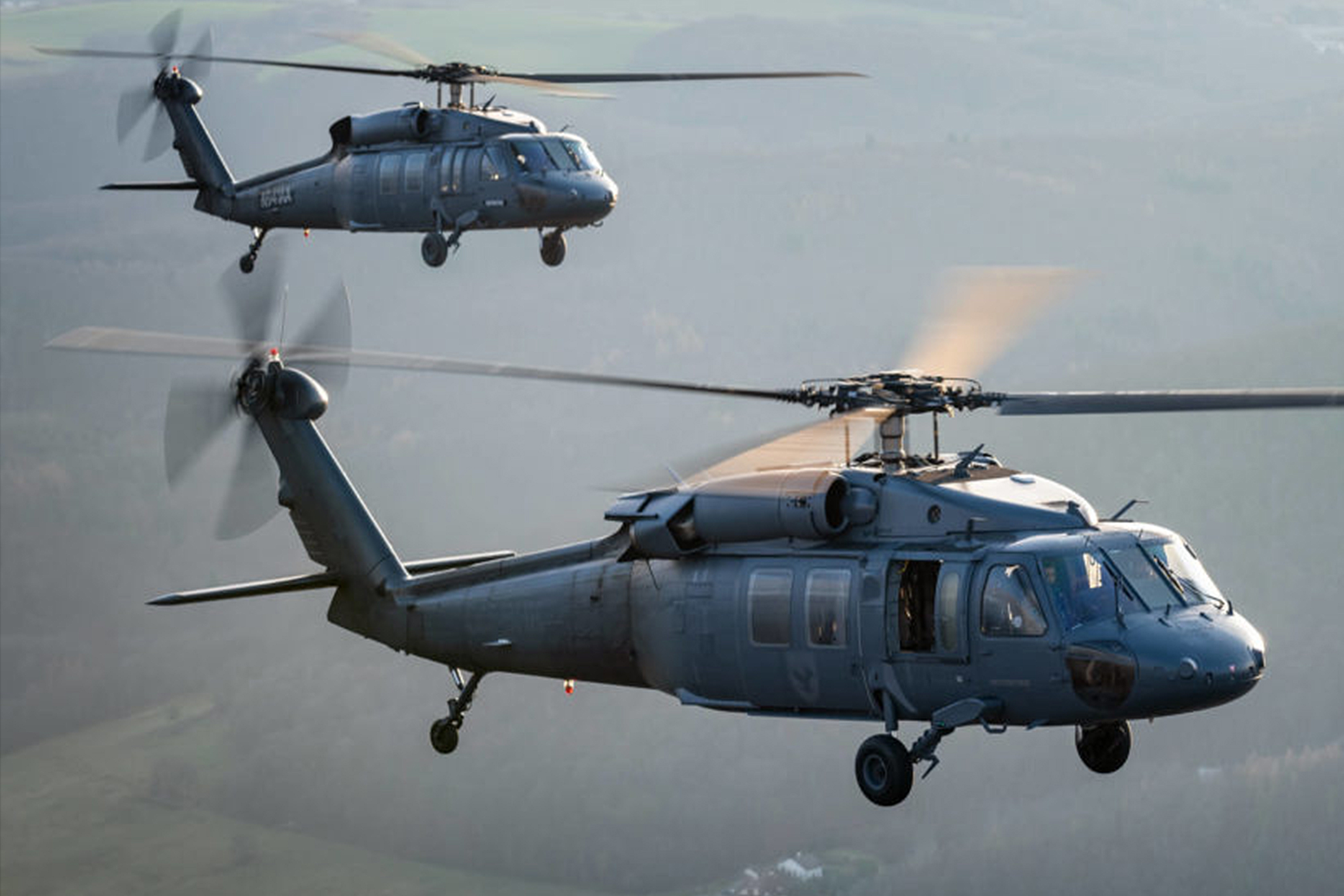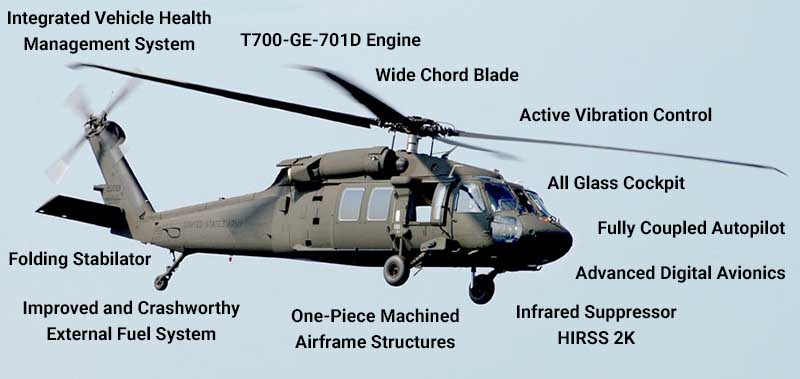Exploring the Flexibility of the UH 60 in Different Army and Noncombatant Duties
Exploring the Flexibility of the UH 60 in Different Army and Noncombatant Duties
Blog Article
Necessary Realities and Insights Regarding the UH-60 Helicopter
The UH-60 helicopter, a keystone of contemporary army air travel, has advanced substantially since its introduction in 1979. Comprehending the complexities of the UH-60's duty reveals an intricate story of development and adjustment that benefits better expedition.
History of the UH-60
The UH-60 Black Hawk helicopter was created in the late 1970s as part of the USA Army's initiative to replace the older UH-1 Iroquois. The demand for an extra functional, sturdy, and capable airplane occurred from the lessons found out throughout the Vietnam War, where the constraints of the UH-1 emerged. In 1972, the Military started a program to obtain a brand-new energy helicopter, culminating in a competitive layout stage that saw a number of producers send proposals.
Sikorsky Aircraft was eventually granted the agreement in 1976, and the very first model of the Black Hawk took flight in 1974. Its layout concentrated on innovative modern technology, consisting of a four-blade blades system and a modular building and construction that allowed for rapid field maintenance and flexibility to numerous goals. Officially getting in service in 1979, the UH-60 quickly became the foundation of Army aviation, offering in a multitude of duties such as troop transport, medevac, and logistical assistance.
For many years, the Black Hawk has actually undergone different upgrades and adjustments, solidifying its status as a necessary asset in military operations around the world (UH 60). Its robust performance remains to fulfill the developing needs of modern war
Style and Features
Incorporating innovative engineering concepts, the UH-60 Black Hawk features a sleek, wind resistant style that improves its performance and efficiency. This twin-engine utility helicopter is defined by its unique shape, with a high-mounted, four-blade main rotor system that offers phenomenal lift and security. The rotor blades are constructed from composite products, adding to their longevity and reducing upkeep demands.
The fuselage is designed for optimum weight circulation and architectural integrity, permitting a maximum gross weight of around 22,000 extra pounds. The cabin design helps with adaptable setups, suiting numerous goals, from army transport to medevac procedures. In addition, the cockpit is geared up with innovative avionics, including electronic display screens and multi-functional systems that boost situational awareness.
The UH-60 likewise includes composite materials in its airframe, which decrease radar cross-section and enhance survivability in aggressive settings. Its retracting landing gear enhances the airplane's profile, further adding to its aerodynamic efficiency. In general, the thoughtful assimilation of design components and products not only boosts the Black Hawk's functional capacities yet likewise guarantees that it continues to be an important property for objectives throughout varied surfaces and conditions.
Functional Capabilities


The UH-60 is furnished with innovative avionics and navigation systems, facilitating procedures in difficult climate problems and low presence scenarios. Its durable style enables it to do in severe and high-altitude temperature conditions, even more prolonging its operational range. The helicopter's twin-engine arrangement provides redundancy and boosted efficiency, making certain dependability throughout important missions.
Furnished with sophisticated interaction systems, the Black Hawk improves situational understanding and coordination among armed forces units. In addition, its capacity to carry out aerial reconnaissance and support close air assistance objectives emphasizes its indispensable duty on the battlefield. Overall, the UH-60 Black Hawk's functional capacities are a testament to its value in contemporary armed forces aeronautics, effectively satisfying the demands of a rapidly developing functional landscape.

Versions and Alterations
Various variants and alterations of the UH-60 Black Hawk have actually been created to satisfy specific mission requirements and boost its operational convenience. One of the most noteworthy variation is the UH-60L, which introduced updated engines, enhanced avionics, and enhanced freight capacity. Furthermore, the UH-60M alternative attributes progressed electronic avionics, an extra effective engine, and enhanced survivability systems, making it appropriate for a larger selection of goals.
The HH-60G Lead Hawk straight from the source is another specialized variant, developed for search and rescue procedures. It is equipped with innovative navigation systems, external gas storage tanks, and medical discharge abilities. Similarly, the MH-60R Seahawk is optimized for anti-submarine warfare and maritime operations, boasting advanced radar and finder systems.
In addition, the armed versions, such as the AH-60, are customized for direct assault functions, featuring tool systems like rockets and gatling gun. The UH-60's flexibility is further showcased in its capacity to be fitted with mission-specific equipment, consisting of freight hooks for transport, army transportation interiors, and reconnaissance sensors.
These alterations and versions highlight the Black Hawk's crucial role in contemporary army procedures, showcasing its ability to adjust to advancing mission needs.
Role in Good Samaritan Efforts
The UH-60 Black Hawk has actually stepped up to play a vital function in altruistic initiatives around the world, showing its convenience past armed forces applications. This multi-mission helicopter is equipped to conduct a variety of objectives, including clinical emptyings, disaster alleviation, and logistical support in difficult environments.
During all-natural calamities, such as earthquakes and her latest blog cyclones, the Black Hawk has verified important for moving alleviation supplies and personnel to impacted locations. Its capability to operate in austere problems enables it to get to remote places that may be unattainable by ground transportation, ensuring prompt help to those in demand.
In Addition, the UH-60 is often made use of for clinical discharge goals, quickly delivering hurt individuals to clinical facilities. Its advanced clinical abilities, consisting of space for clinical personnel and devices, enable life-saving treatments throughout crucial situations.
In worldwide operations, the Black Hawk regularly collaborates with humanitarian organizations, showcasing its versatility and integrity. By leveraging its abilities, the UH-60 not just sustains armed forces objectives but likewise plays a necessary function in conserving lives and easing suffering during altruistic situations worldwide.
Verdict
The UH-60 helicopter has actually established itself as a crucial property in army operations considering that its introduction, identified by its robust style and versatile capacities. Its various setups cater to a large range of goals, from troop transportation to medical emptying. Additionally, the UH-60's payments expand beyond battle, playing a substantial role in humanitarian efforts worldwide. The continuous development of this aircraft highlights its value in modern-day air travel and its flexibility to satisfy Full Report diverse operational needs.
The UH-60 Black Hawk helicopter was established in the late 1970s as component of the United States Military's initiative to replace the older UH-1 Iroquois.Incorporating advanced design concepts, the UH-60 Black Hawk includes a sleek, aerodynamic style that improves its efficiency and performance.Optimized style and progressed design permit the UH-60 Black Hawk to excel in a range of functional duties. Overall, the UH-60 Black Hawk's operational abilities are a testimony to its value in modern armed forces air travel, effectively satisfying the needs of a rapidly developing functional landscape.
Different versions and adjustments of the UH-60 Black Hawk have actually been developed to satisfy details objective demands and improve its operational convenience.
Report this page